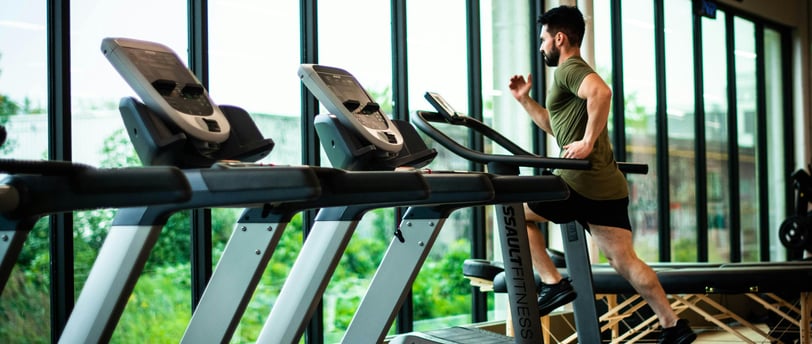Five Minutes to Better Health: Small Bursts of Daily Exercise Could Lower Blood Pressure
Discover how just five minutes of daily exercise, like stair-climbing or uphill walking, can significantly reduce blood pressure and better health. Backed by new research from the ProPASS Consortium, this simple approach makes blood pressure management accessible to everyone. Learn easy ways to integrate high-intensity bursts into your routine, and start your journey toward a healthier heart today! #HeartHealth #BloodPressure #HealthyLiving
WELLNESS
11/10/20244 min read


High blood pressure, or hypertension, often sneaks up on people, earning it the nickname “silent killer.” Affecting over a billion adults worldwide, it’s a significant cause of premature death and is linked to severe health issues, including heart disease, kidney damage, and stroke. Fortunately, new research provides hope for those aiming to combat hypertension with a simple, accessible solution: small bursts of physical activity.
A groundbreaking study by experts from the ProPASS (Prospective Physical Activity, Sitting and Sleep) Consortium, an international collaboration led by the University of Sydney and University College London (UCL), has uncovered powerful insights. According to the findings published in Circulation, just five minutes of vigorous activity like stair climbing or uphill walking each day can make a real difference in blood pressure levels.
The Power of Short Exercise Bursts: What the Study Found
One of the most striking findings of the study is the impact of replacing sedentary time with physical activity. Participants who added as little as five minutes of intense movement each day saw measurable reductions in blood pressure. Furthermore, substituting between 20 and 27 minutes of sedentary behavior with activities like running, stair climbing, or cycling led to even more substantial improvements.
Professor Emmanuel Stamatakis, a senior author of the study and the Director of the ProPASS Consortium, emphasizes the accessibility of these findings. He states, “High blood pressure is one of the biggest health issues globally, but unlike some major causes of cardiovascular mortality, there may be relatively accessible ways to tackle the problem in addition to medication.”
The research analyzed data from over 14,000 volunteers across five countries, offering a comprehensive look at how different types of movement affect blood pressure. Each participant wore a thigh-mounted accelerometer to track their activity levels throughout the day and night. From sleep to sedentary behavior, slow walking, fast walking, standing, and vigorous exercise, the data provided a detailed picture of daily movement patterns and their effects on cardiovascular health.
Small Changes, Big Impacts
The ProPASS team’s approach was innovative, using statistical models to predict blood pressure changes based on varying amounts and intensities of movement. The results revealed that even short, intense activities could lead to clinically significant improvements in blood pressure management.
For individuals who don’t have time for lengthy workout routines, this research is especially encouraging. Even if you’re someone who finds it difficult to fit exercise into a busy schedule, these findings suggest that brief moments of exertion—like running up a flight of stairs or briskly cycling—can still make a difference.
The Science Behind Hypertension and Exercise
Hypertension arises when blood exerts too much pressure on artery walls over time, increasing the risk of cardiovascular events like heart attacks and strokes. Lifestyle factors, including diet, stress, and physical activity, all play a role in blood pressure regulation.
Exercise, especially activities that elevate heart rate, helps improve circulation, strengthens the heart, and enhances overall cardiovascular function. The findings from the ProPASS study align with existing research showing that regular physical activity can be a powerful tool in managing blood pressure. What’s unique here, though, is the minimal time investment needed for measurable effects.
Dr. Jo Blodgett from UCL and the Institute of Sport, Exercise, and Health, and the study’s first author, explained, “Our findings suggest that for most people, exercise is key to reducing blood pressure, rather than less strenuous forms of movement such as walking.” While gentle activities like walking can still offer benefits, adding intensity has a more pronounced effect on blood pressure.
Accessible and Effective: Making Exercise Part of Your Routine
For those looking to incorporate this approach into their lives, the good news is that these exercise bursts don’t require gym memberships or extensive time commitments. Everyday activities like brisk walking up a hill, taking the stairs instead of the elevator, or cycling to run errands can all contribute to better heart health.
Professor Mark Hamer, another senior author and Deputy Director of the ProPASS Consortium, highlighted the potential for integrating these findings into public health strategies. “Our findings show how powerful research platforms like the ProPASS consortium are for identifying relatively subtle patterns of exercise, sleep, and sedentary behavior that have significant clinical and public health importance,” he said.
How to Get Started with High-Intensity Movement
If you’re interested in implementing these findings into your daily life, here are a few simple ways to add short bursts of high-intensity activity:
Stair Climbing: Opt for the stairs over elevators whenever possible. Even a quick flight up can get your heart rate up and improve your fitness.
Uphill Walking: Incorporate a brisk, uphill walk into your daily routine. Whether it's a nearby hill or an inclined treadmill, this movement can be especially effective.
Mini-Workouts: Squeeze in a five-minute workout during a break or between tasks. Activities like squats, jumping jacks, or lunges can elevate your heart rate quickly.
Active Errands: If possible, bike or briskly walk when running errands close to home.
Household Chores: Tasks like vacuuming or carrying groceries up the stairs can double as high-intensity exercise.
Why This Matters
With over 1.28 billion people affected by hypertension globally, accessible interventions like these could help reduce cardiovascular disease on a large scale. The research indicates that a population-level shift, with people replacing 20–27 minutes of sedentary time daily with moderate-to-vigorous exercise, could potentially reduce cardiovascular disease by up to 28 percent.
Join the Movement for Healthier Living
The implications of this research are far-reaching, and you don’t need to be a fitness enthusiast to benefit. The study's findings underscore the potential for everyone to improve their heart health through short, accessible bouts of physical activity. Whether you're taking the stairs, briskly walking to the store, or adding a quick uphill sprint to your routine, these small changes can add up over time.
If you're already making these adjustments or planning to start, let us know in the comments! How do you plan to fit five minutes of extra exercise into your day? Share your thoughts, experiences, or even tips with others who may want to start this simple yet powerful habit.
Ready to take action for better health?
Follow us for more health tips, and don’t forget to like, comment, and share this post to inspire others! Let's spread the word about these simple lifestyle changes that can lead to a healthier, happier life.
#HealthyLiving #BloodPressure #HeartHealth #ExerciseForLife #ProPASSConsortium #StayActive #SmallChangesBigResults
Photo by William Choquette


Photo by Towfiqu barbhuiya
Bodymindbeing
Your guide to a fulfilling life.
Contact Us
support@bodymindbeing.me
© 2024. All rights reserved.
